-
You can vote for the People’s Choice Award for Wildlife Photographer of the Year.
-
The Natural History Museum in London published the images and will display them in February.
-
Photos show a trash-kicking elephant, a territorial mudskipper, a loving family of lions and more.
In a moment of mercy, a turtle was caught letting a dragonfly land on its face instead of turning it into a crunchy snack.
The Balkan pond turtle lives throughout Asia and Europe, and enjoys a diet rich in whatever is found nearby. But, according to the Croatian Herpetological Society, they prefer meat, which makes the tortoise decorum here even friendlier.
“The turtle seemed to be enjoying the interaction as they shared a moment of peaceful coexistence amidst the murky waters of the swamp,” photographer Tzahi Finkelstein said in the photo’s official caption.
This photo is one of 25 currently considered the public’s favorite wildlife photo of 2023.
It is an offshoot of a wider competition initially judged in October, Wildlife Photographer of the Year, developed and produced by the Natural History Museum in London.
Winners of the people’s choice award will be announced in February 2024 and will be displayed at the museum alongside those announced earlier this year.
This is just a part of the 25 images in the title. If you want to see them all and vote for your favorite, you can do so here. Voting closes on January 31, 2024.
A bear looking askance at the photographer.
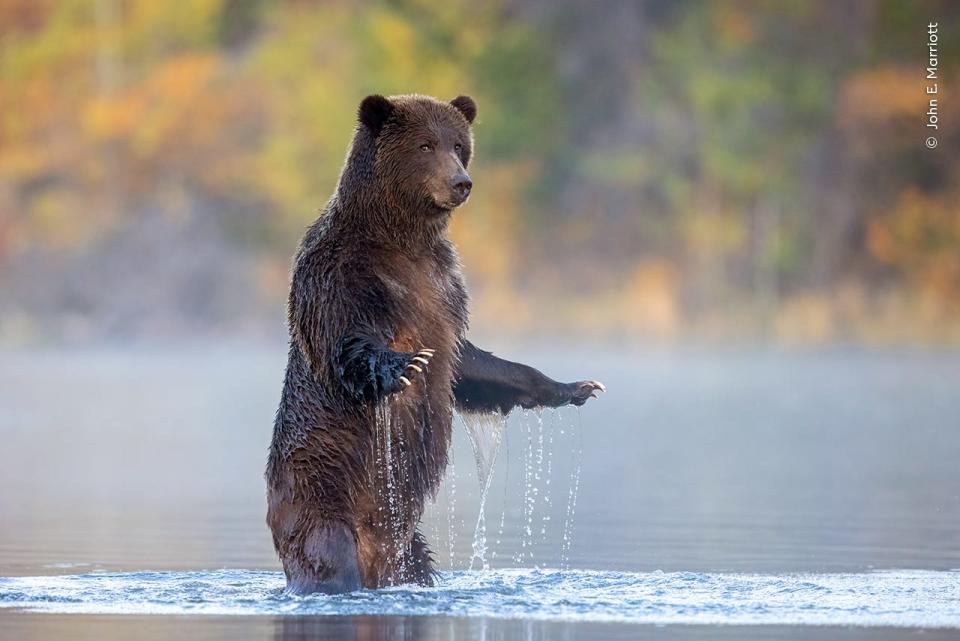

Grizzly bears have returned to North America thanks to conservation efforts that began in the 1970s. Today, people can’t get enough of seeing these adorable carnivores.
The Chilko River in British Columbia, Canada, is known for its grizzly bears. Several companies offer tours of the area to see the bears while feasting on local populations of sockeye salmon.
John Marriott, the photographer who captured this moment, was leading a grizzly bear photography tour when he came across this bear.
As they approached in their small fishing boat, the official legend details, the bear looked at them with a “questioning” expression for a moment, before refocusing on the salmon.
A curious lion cub and his watchful mother
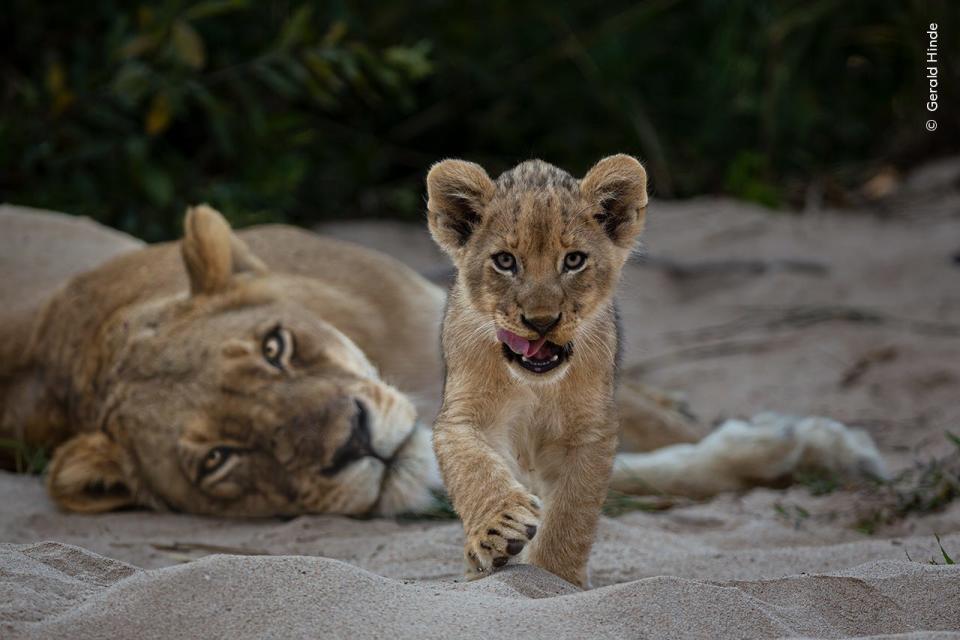

Life in the savanna can be brutal for the king of the jungle, and a baby lion must be wary of predators such as humans, leopards, and adult male lions. As such, the photo’s official caption details, mother lions typically keep their cubs hidden for about the first six weeks of their lives.
The photo, called “Curiosity” by photographer Gerald Hinde, shows a lion cub approaching a vehicle as its mother watches in South Africa’s Greater Kruger National Park.
Despite everything the animal had to fear, it approached Hinde. Curiosity, it seems, is not limited to domestic cats.
A homecoming for this bat
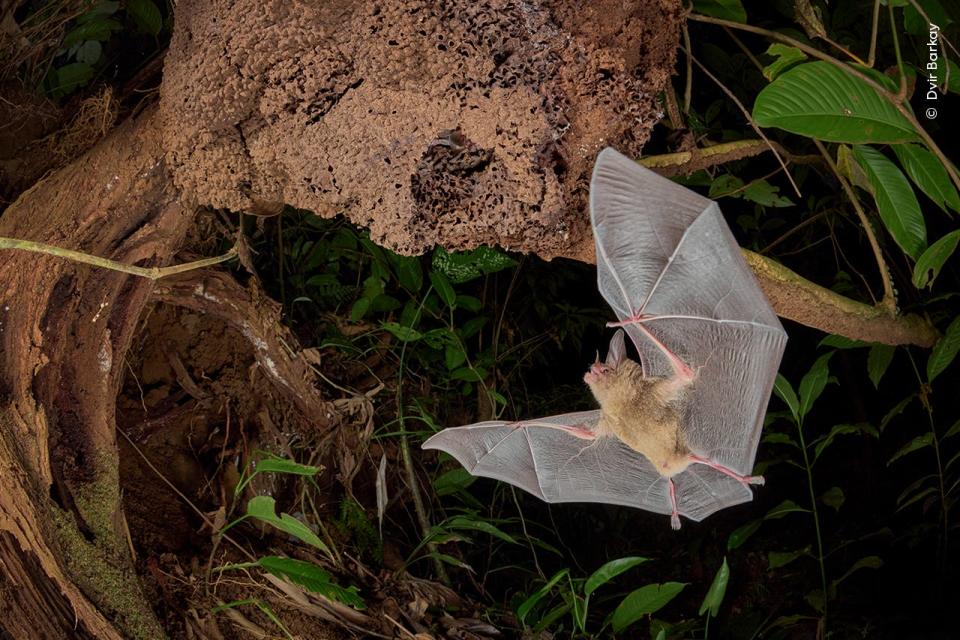

This photograph shows the underside of a round-eared pygmy bat as it makes its final flutter toward its home in a termite nest in Costa Rica.
He returns home with two almost indistinguishable bats, poking their heads out of the nest.
This strange-looking nest is not just decorative, it is a unique feature of this species that, according to photographer Dvir Barkay, took years to capture.
Bats make their home in termite nests in Costa Rica by hollowing them out with their teeth, according to the image caption.
A sleepy polar bear
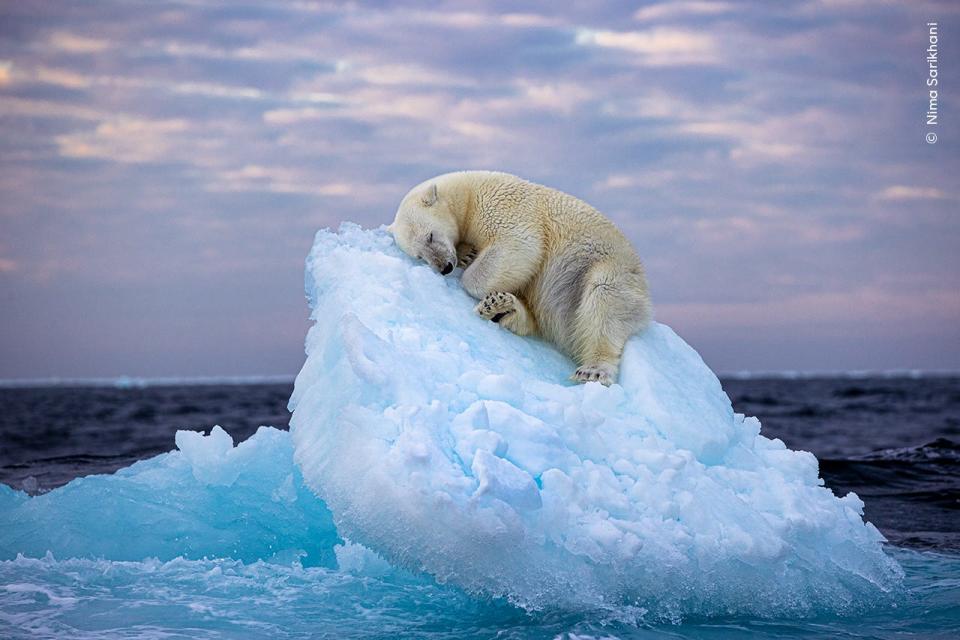

Polar bears, like us, sometimes worry about their bedding before falling asleep.
In this case, photographer Nima Sarikhani observed how this polar bear used its paws to dig a corner in a small iceberg, making it an ideal place to fall asleep.
Sarikhani found this fussy sleeper in the water off the Svalbard archipelago in Norway.
Although the area is known as the “land of the polar bears,” it took Sarikhani three days and multiple course corrections on his research vessel to find bears.
A neighborhood disagreement
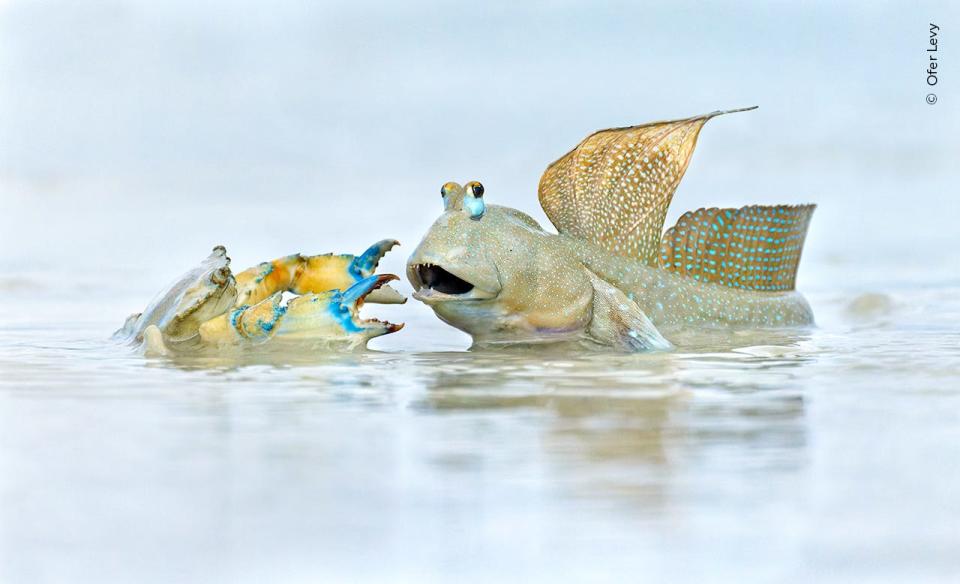

This funny-looking creature is no stranger to hardship: the grasshopper is a hardy fish that can live both in and out of water.
This particular fish was found fighting an invasive crab in Roebuck Bay, Australia, by photographer Ofer Levy. Levy witnessed the fish repeatedly start fights for their muddy kingdom.
“This crab is evidently trespassing, and by opening its mouth and raising its dorsal fin, the mudskipper challenges the intruder, attempting to scare it away with a menacing display,” according to the photo’s official caption.
An elephant kicks garbage to collect it
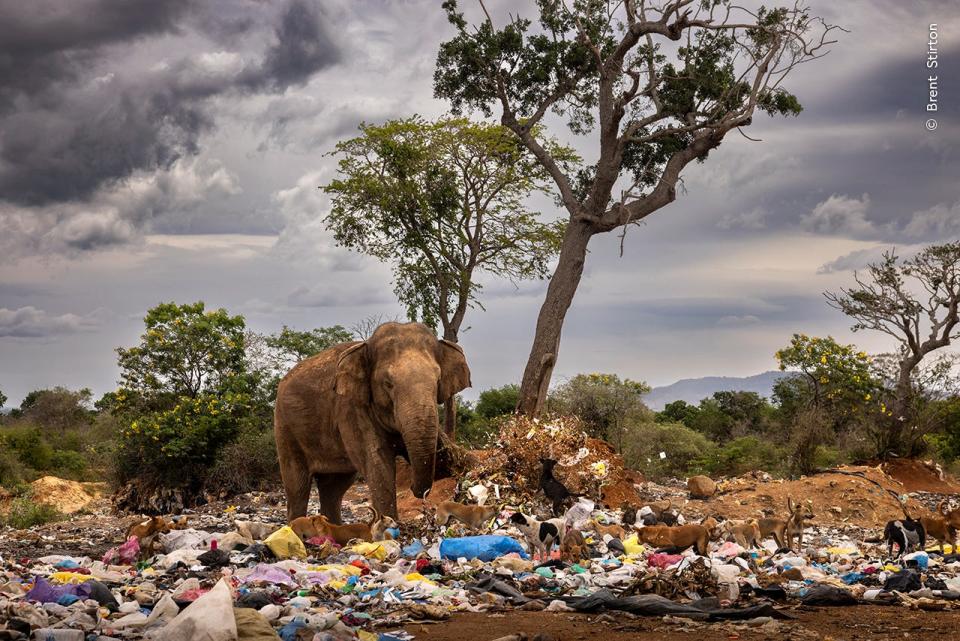

This photograph captured an elephant searching for food in a landfill in Sri Lanka. As humans continue to encroach on elephant habitat, viewers have witnessed more of this behavior, according to the caption.
From the scars on the elephant’s legs, it appeared that the animal had been shot before, most likely by a farmer trying to prevent it from eating crops.
So, the caption details, this elephant is probably no stranger to searching for food.
Lionesses showing that it takes a village
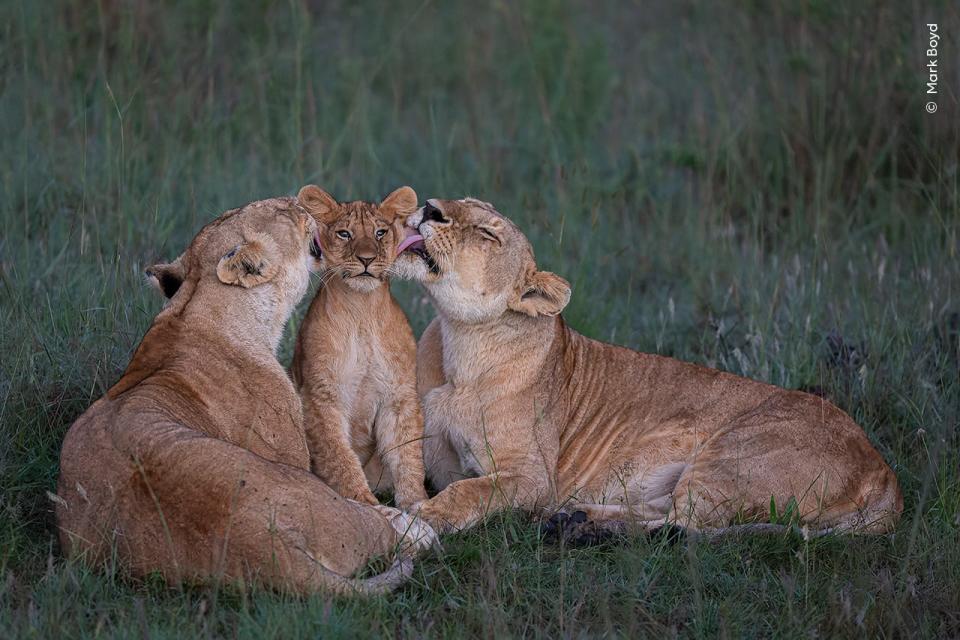

This photo shows two lionesses grooming a cub in their care in the Masai Mara National Reserve in Kenya. It is estimated that between 850 and 900 lions live in the area.
“The young man was clearly enjoying the moment of affection and attention,” according to the caption.
Lionesses raise cubs indiscriminately, sharing the burden of rearing duties and keeping the cubs together in a nursery group called a nursery.
This is not only a comforting show of cooperation, but it can also help puppies avoid being eaten. After all, there is safety in numbers.
A penguin bothers its neighbors
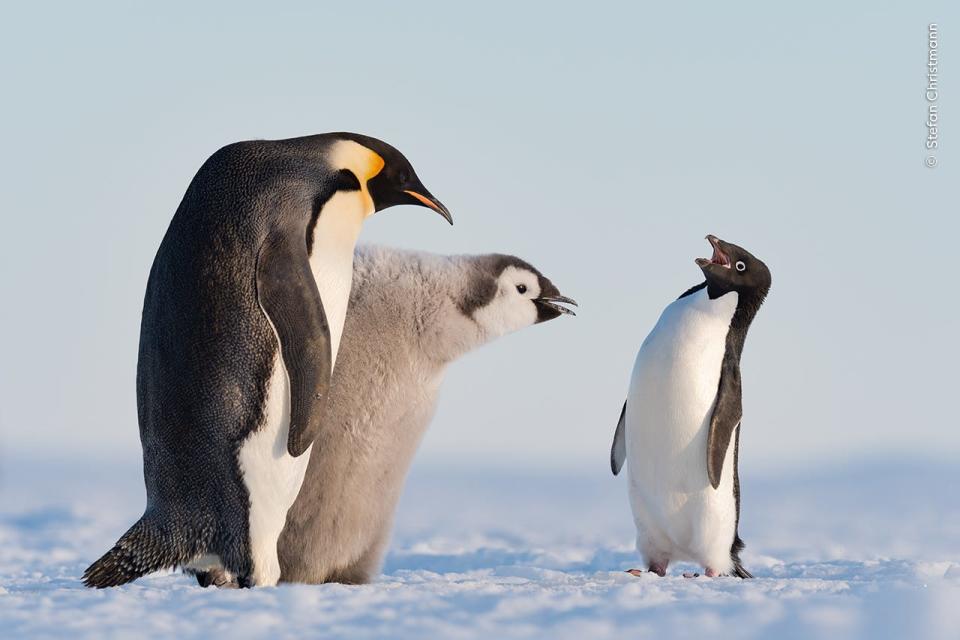

Adelie penguins are a known nuisance in Antarctica, according to the title of this photograph, titled “Troublemaker.”
During certain seasons, Adelie can be found taunting other penguin species, such as emperors, to try to get them to drop their food.
So when photographer Stefan Christmann saw this Adelia approach an adult emperor and its chick, he paid special attention.
A hare sliding on the snow.
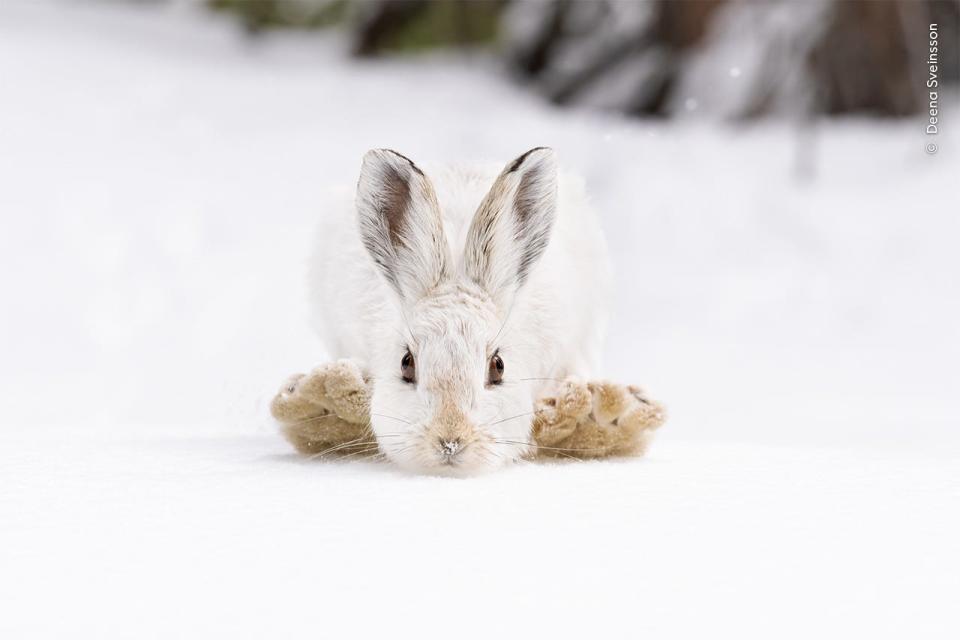

Photographer Deena Sveinsson waited hours for this sleeping snowshoe hare to awaken from its slumber, capturing the moment its paws touched the snow.
These large, flat feet act like snowshoes and help prevent the hare from sinking into the snow.
Sveinsson herself had to use snowshoes to reach this point in Rocky Mountain National Park, aligning subject and photographer in the fight against the elements.
A fox negotiating with a shrew.
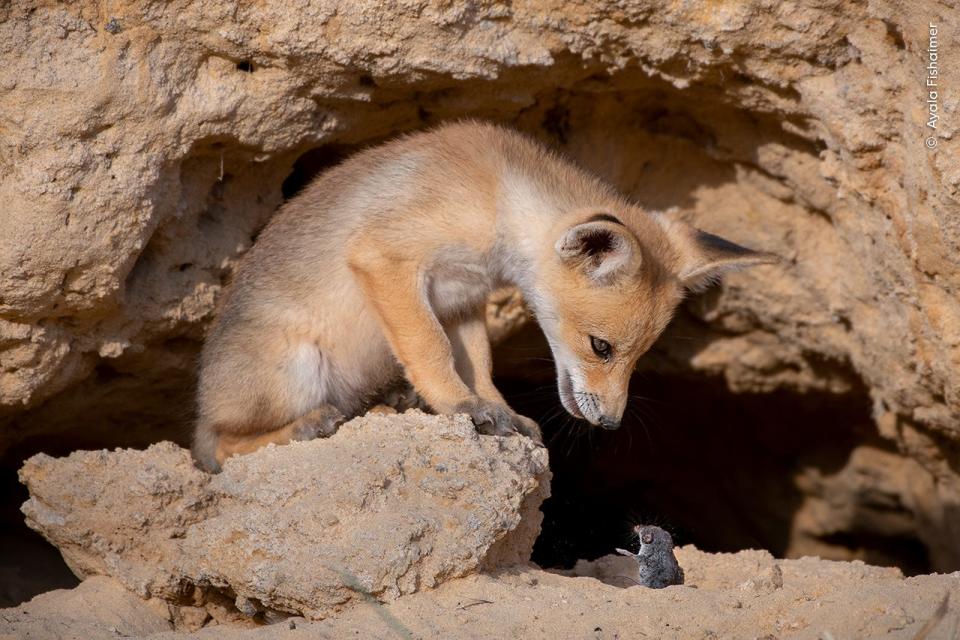

Like children, red foxes sometimes play with their food.
In this case, a fox cub in the Judean foothills of Israel was caught staring at a shrew that it had just grabbed from the sand and thrown into the air.
Photographer Ayala Fishaimer captured this interaction on camera after following this puppy and his three siblings.
Read the original article on Business Insider